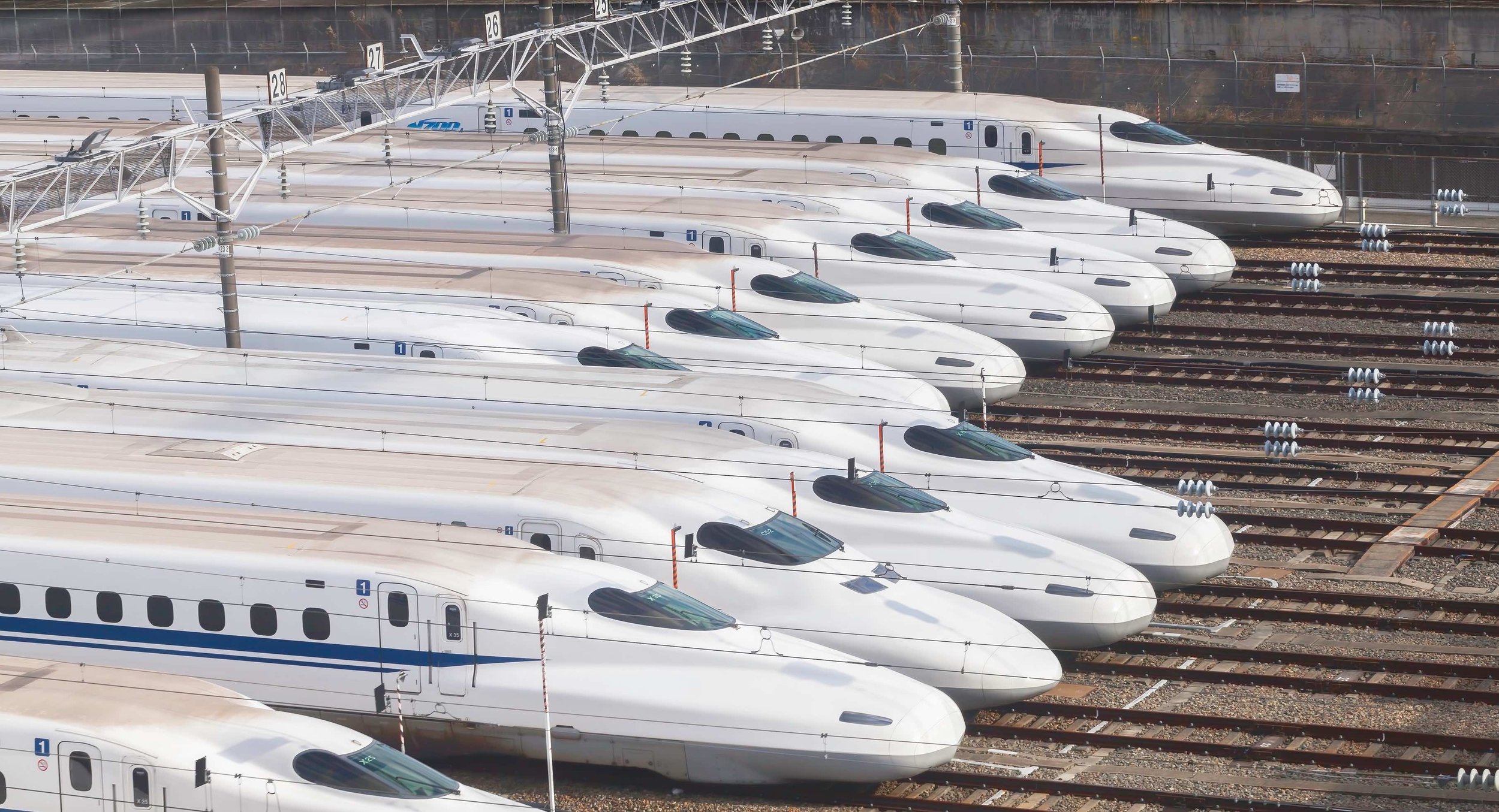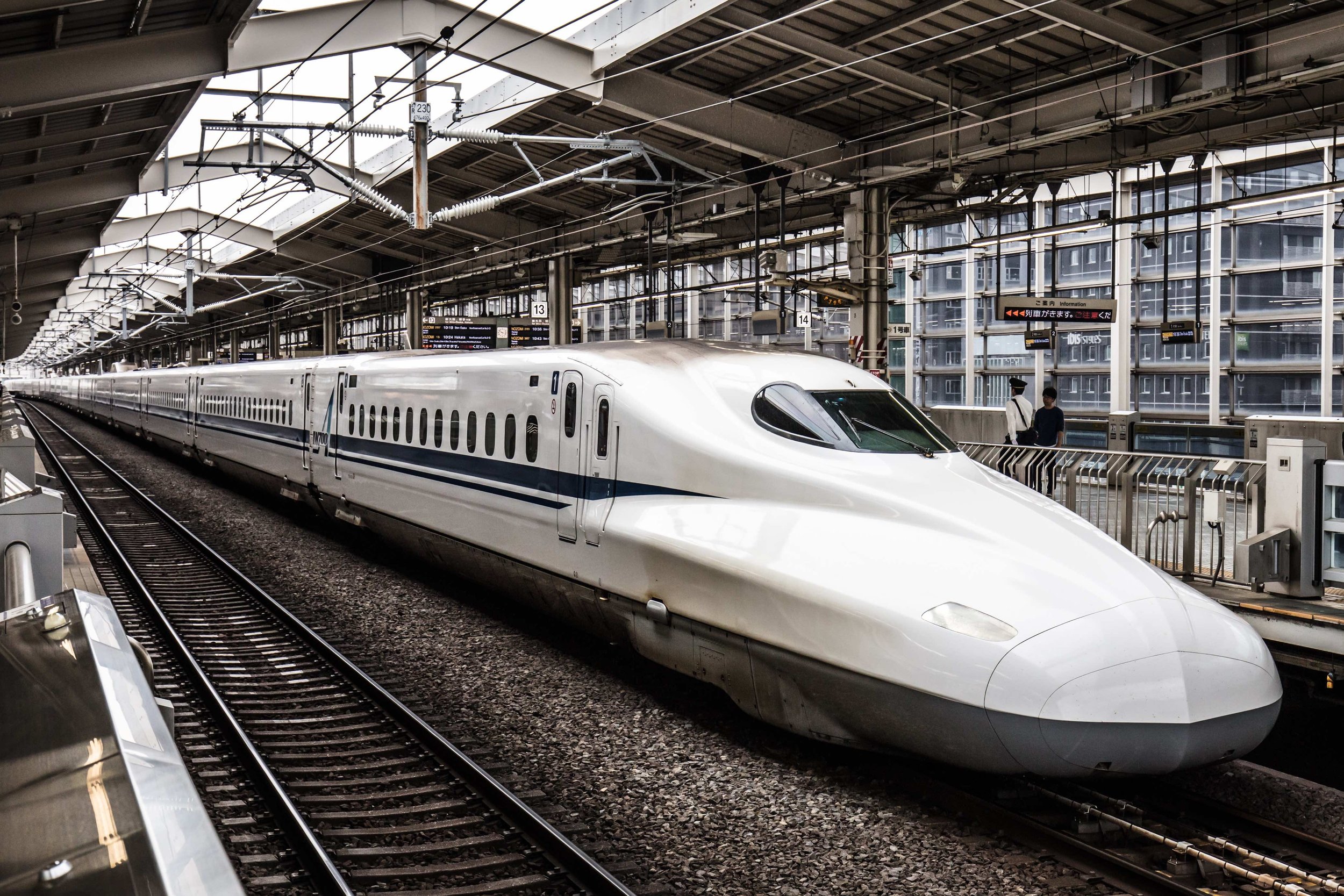
Shinkansen 新幹線
The bullet train
The Shinkansen, also known as the 'bullet train', is a high-speed railway system in Japan that has been in operation since 1964. It is operated by the Japan Railways Group and serves the country's major cities, including Tokyo, Osaka and Nagoya.
One of the most remarkable features of the Shinkansen is its speed. Trains can reach speeds of up to 320 km/h (200 mph) and have a reputation for being punctual, with rare delays of only a few minutes. This speed and reliability make the Shinkansen a popular choice for travellers in Japan, as it allows them to travel long distances quickly and efficiently.
In addition to its speed, the Shinkansen is also known for its comfort and convenience. The trains are equipped with a variety of amenities, including comfortable seats, toilets, vending machines and food service. Many of the trains also offer reserved seats, allowing travellers to choose their seats in advance.
The Shinkansen network is extensive and covers most of the main island of Honshu and parts of the northern island of Hokkaido. There are several types of Shinkansen trains, including the Nozomi, which serves the main cities of Honshu, and the Hokkaido Shinkansen, which serves the northern island of Hokkaido.
The Shinkansen has had a significant impact on Japan's travel and economy and has become an iconic symbol of the country's modernity and efficiency. It has also inspired the development of high-speed rail systems in other countries around the world.
Japan's high-speed network
Japan's bullet train network is expanding with some route extensions scheduled to open as early as 2026.
The first high-speed railway line was built in just five years. On 1 October 1964, the line was opened for commuter traffic at 6am. The Hikari bullet train made its debut, with one train departing from Tokyo Station and the other from Shin-Osaka Station. These 0-series Shinkansen models remained in use until 1999.
The Strait Tunnel
The Seikan Tunnel, which connects Aomori on the island of Honshu with Hakodate on the island of Hokkaido, is certainly a masterpiece of modern engineering. Inaugurated in 1988, its construction cost more than 7 billion dollars and its length (53 km) is longer than the Channel Strait Tunnel.
The speed of the Shinkansen
The Japanese shinkansen high-speed train project is older than anyone can imagine with its inauguration in 1964. At the time of its inauguration, the train travelled at a maximum speed of 200km/h.
Over the years, the train models have evolved as have the train routes, allowing a current speed of 320km/h.
The most impressive fact, however, is that in almost 60 years of service, no fatal accidents due to malfunction or human error have been reported on the high-speed network.
Shinkansen seats and classes
Most shinkansen trains in Japan offer seats in different classes, which are usually in separate carriages:
Ordinary or Standard Class
As the name suggests, ordinary seats are the normal seats found on all shinkansen trains. Although the size and foot space of ordinary seats vary between trains, ordinary seats on the shinkansen are generally comfortable and offer a generous amount of foot room. They are usually available in rows of 3+2 seats.
Green class
Comparable to business class on aeroplanes, green coaches offer seats that are larger and more comfortable than ordinary seats and provide even more foot room. The seats are arranged in rows of 2+2 seats. First class carriages tend to be less crowded than normal carriages.
Grand Class
This luxurious class of travel is available on the new trains of the Tohoku Shinkansen, Hokuriku Shinkansen, Joetsu Shinkansen and Hokkaido Shinkansen lines. Comparable to first class on aeroplanes, Gran Class offers even more spacious and comfortable seats than Green Car seats (in rows of 2+1 seats) and additional amenities and services such as personal screens.






